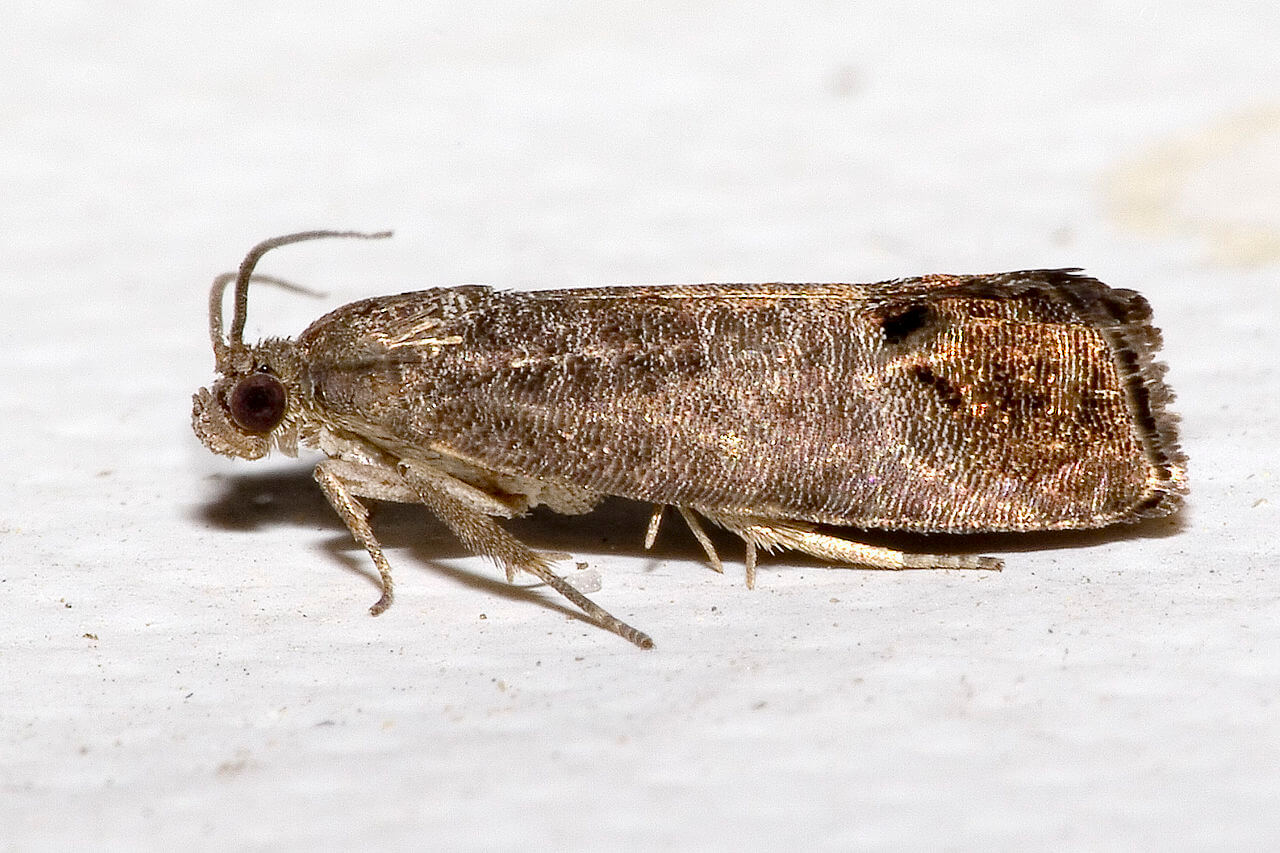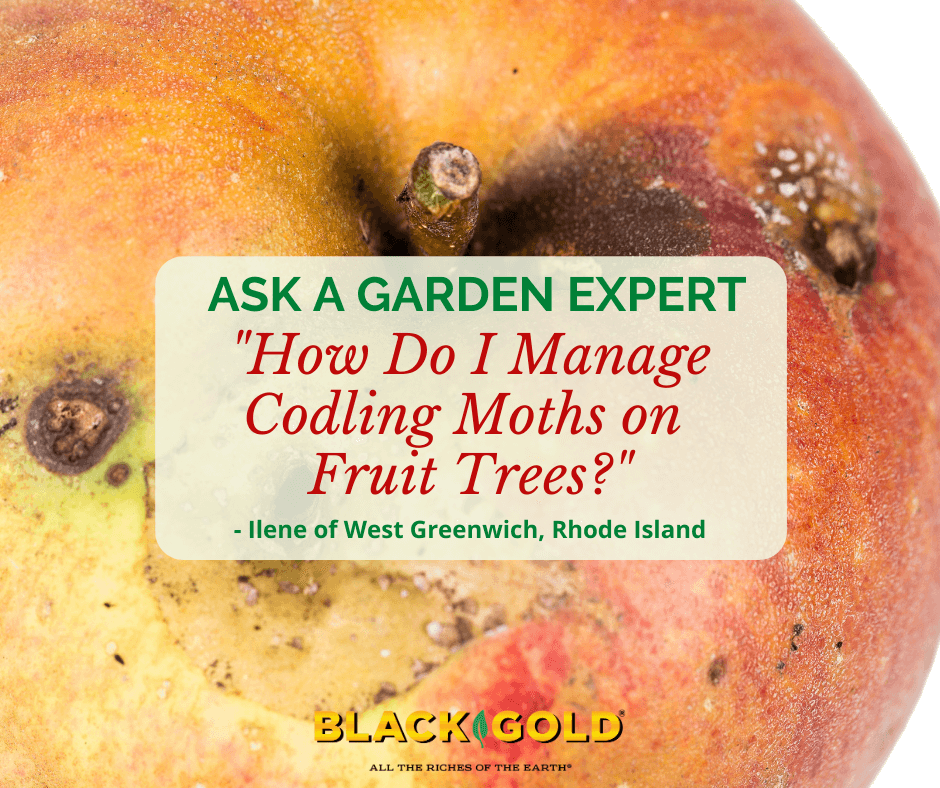“I have a Liberty apple tree and a peach tree within 20 ft of each other and every year fruit tries to grow but what I believe is the coddling moth destroy it all. Do you have an effective solution? Sprays have not helped.” Question from Ilene of West Greenwich, Rhode Island
Answer: It is likely that you are dealing with European apple codling moths (Cydia pomonella) and Asian peach moths (Grapholita molesta). Both exist in Rhode Island, look similar, and cause comparable damage, but one prefers peaches, and the other chooses apples. Here are three suggestions for overcoming these pests in your home orchard.
Know Your Pests

The codling moth is small and mottled with greyish-brown. Its wings fold in a tent-like manner, and it reaches about 1 cm in length. You will see them most often in the orchard from late May to mid-July. (Click here to learn more.) The Asian peach moth is smaller, mottled, gray, and measures about 1/4 inch (5 mm). The wings have mottled light and dark banding and also fold in a tent-like manner. The first adults of the season appear from mid- to late-May. Subsequent generations appear from June through to mid-July. (Click here for more information.)
Keep Orchards and Trees Clean
In fall, remove all spoiled, fallen fruits that may harbor moths, bag them, and dispose of them away from your orchard. Look for the codling moth’s brownish moth pupae in winter, which can be found in protected spots near where apples are stored and in tree bark. The moths emerge in mid-spring ready to attack fruits.
I also recommend cleaning and disposing of all fallen fruit-tree leaves to reduce the prevalence of any potential fungal diseases that overwinter on dried foliage.
Time Your Spraying
Time your spraying with precision to stop these pests. A good time to first spray trees is in spring a week after they have dropped all of their petals. This should help tackle the first wave of both codling moths and Asian peach moths. The second time to spray is when the fruits are developing. Codling moths lay single white eggs on the fruits and leaves. These can be manually removed from fruits. Never spray trees when they are in flower. Otherwise, you will be killing all the essential pollinators, while not harming the moths.
I recommend two sprays for these pests: Codling moth virus and horticultural oil are approved for organic gardening, and will stop your apple moths, but frequent applications are needed. Organic insecticides with the beneficial bacterium Spinosad work well against both moths, but these sprays can only be applied several times in a season, so read the product instructions.
Use Sticky Traps
There are pheromone traps designed to just trap and kill these two pests. Set them up by mid to late May just before the first round of moths start flying. These should really help lower your populations and save you some fruit.
I hope that these tips help!
Happy gardening,
Jessie Keith
Black Gold Horticulturist


